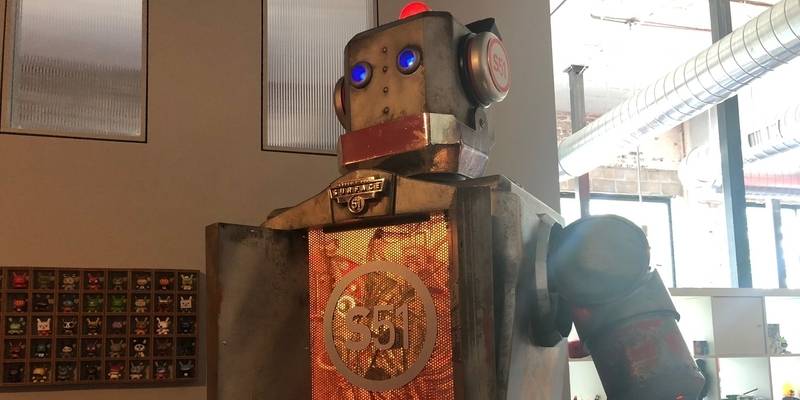The workspace aesthetic of Surface 51, the marketing and design firm in Champaign, is far from conventional; one of the first things you notice is a row of old school arcade games lining the wall. But they’ve upped their pop art game with the addition of a life-sized robot. Yep, a robot. One that plays music, has programmed phrases, and even announces Friday happy hour each week. So how did Surface 51 come to have such an addition to their environment? It all began with an empty space and a conversation.
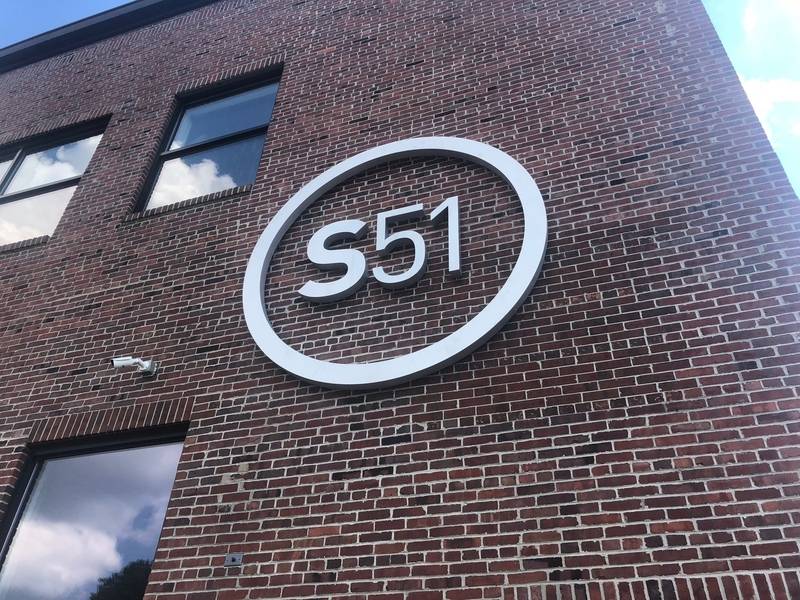
Surface 51 took up residence in their current home at 804 N. Neil Street in 2012. The central portion of the warehouse space was calling out for something to be there. “I always had this idea to have a sculpture or even a 3-D print of some toy we had here,” said Al Fleener, president and creative director of Surface 51. “We even talked about taking one of the toy characters we’ve got and making a jumbo papier mache.” When showing off the new digs to Betty Brennan, president of Taylor Studios in Rantoul, Fleener pointed to that spot and said, “Betty you make all of this super cool big stuff, I’d love to have you guys make something for us someday.” Taylor Studios creates custom exhibits for visitor-centered organizations such as museums, parks, nature centers, and universities. According to Brennan, their fabrication studio includes “woodworking, metal work, a model shop, cabinetry and more. We can build just about anything!” Flash forward to 2017. Surface 51 was asked to present at the Champaign County EDC board meeting. Part of the presentation included a video entitled A Day in the Life at Surface 51, a quick snapshot of the Surface 51 vibe. Brennan was in attendance, and after the meeting she went to Fleener and said “we need a version of this. Do you still need something big for your studio?” From there a collaboration was born. Surface would pull in ideas from Taylor and create their video, and Taylor would pull in ideas from Studio to create something for their space.
So why a robot?
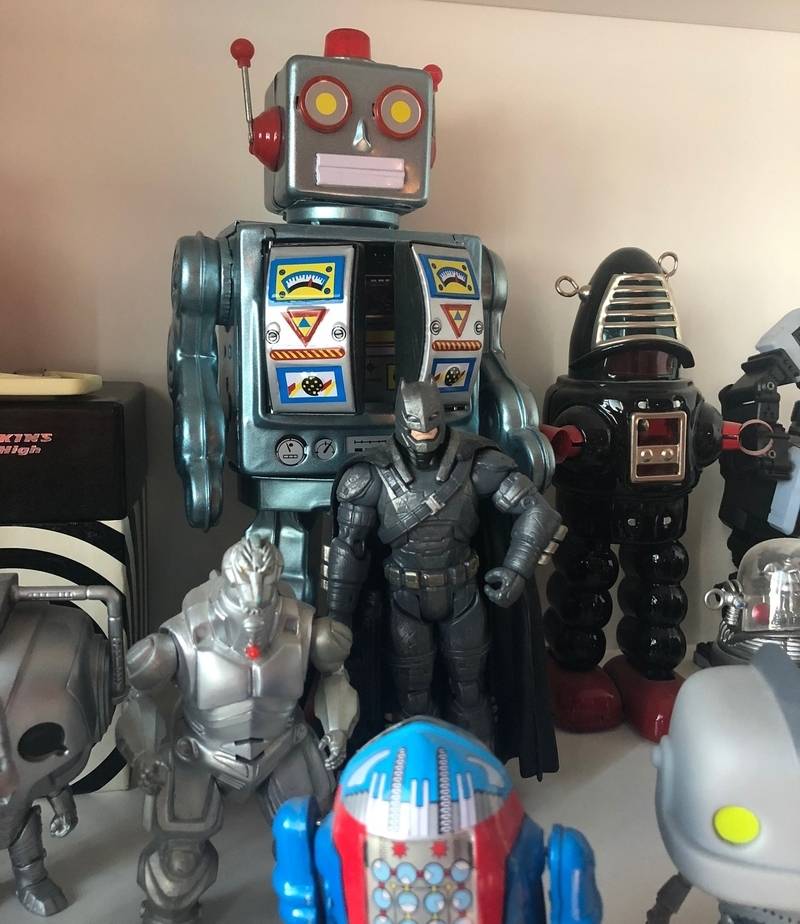
“Well there are a few of us here that are just total geeks,” says Fleener. “We love old school sci-fi retro things.” A small toy robot, sitting on a shelf in his office, become somewhat of a prototype for the project. Once every few weeks the teams would get together to craft their vision for the robot. Fleener says “they did a really good job of finding elements that would resonate with us. They got to know us. When we put it in the studio everyone said ‘it just feels like it’s been here. Like we built this studio because we found this robot and built around it.’”
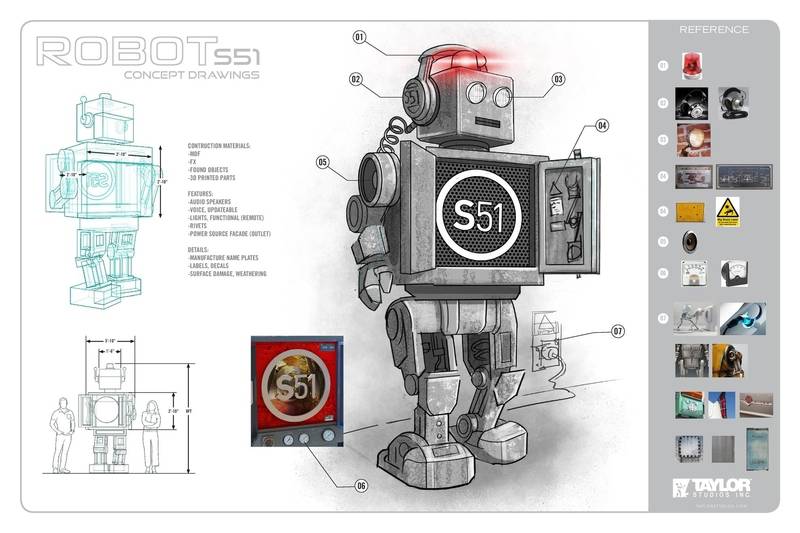
The robot’s appearance was shaped during those brainstorming sessions with the two businesses. “They threw a lot of different types of robots up on the screens just to get our reactions. For instance, they would have something from the Jetson’s, District 9, Wall-E…and they finally picked up on the idea that we didn’t want the most pristine looking robot.” The distressed details give a worn look, like it’s been around a while. “That kind of spoke to Surface 51. We’ve got a really nice aesthetic, but we’re a roll up your sleeves get things done kind of place.”
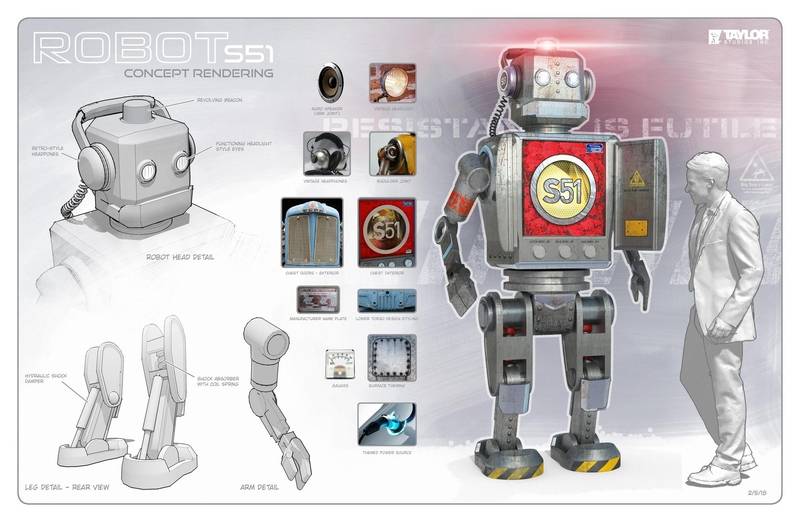
Leah Rainey, project manager at Taylor Studios, described the next steps. “Following that initial brainstorm, our exhibit designer came up with a rough sketch of the robot model. We got S51’s feedback, made some tweaks, and then finalized the sketch to send to fabrication. Out at the shop, our fabrication artists came up with the materials and methods to bring it to life, adding their own creative touches along the way to really flesh it out.”
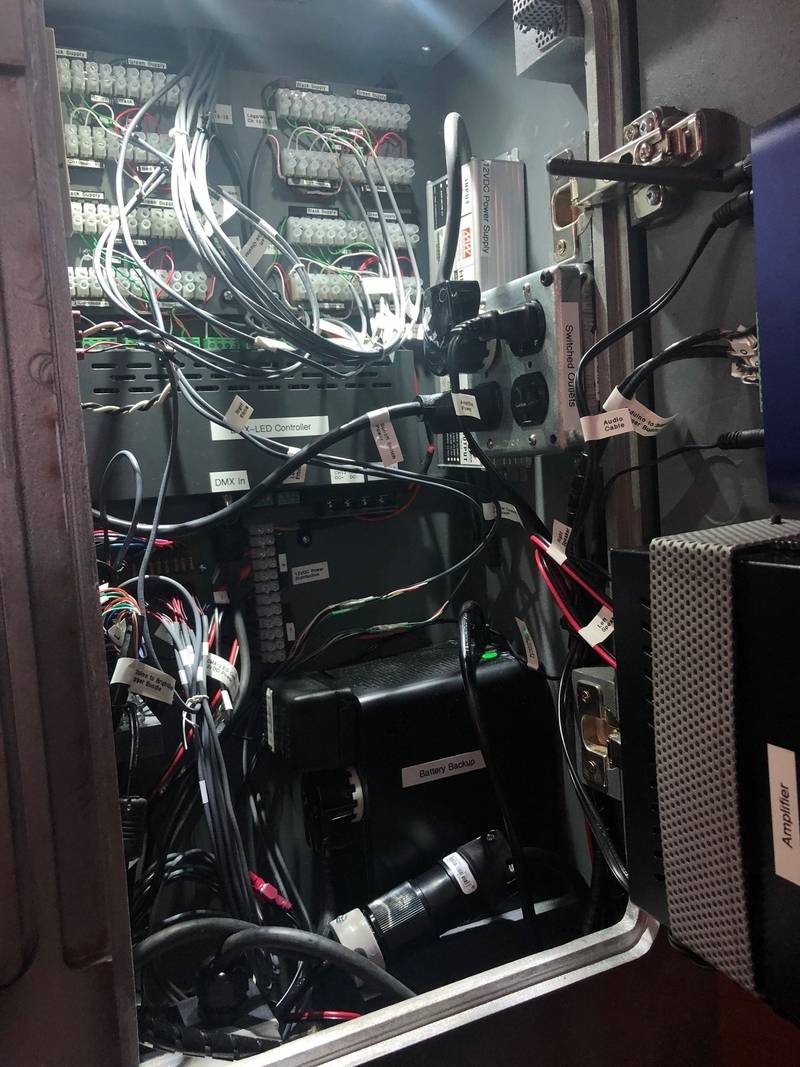
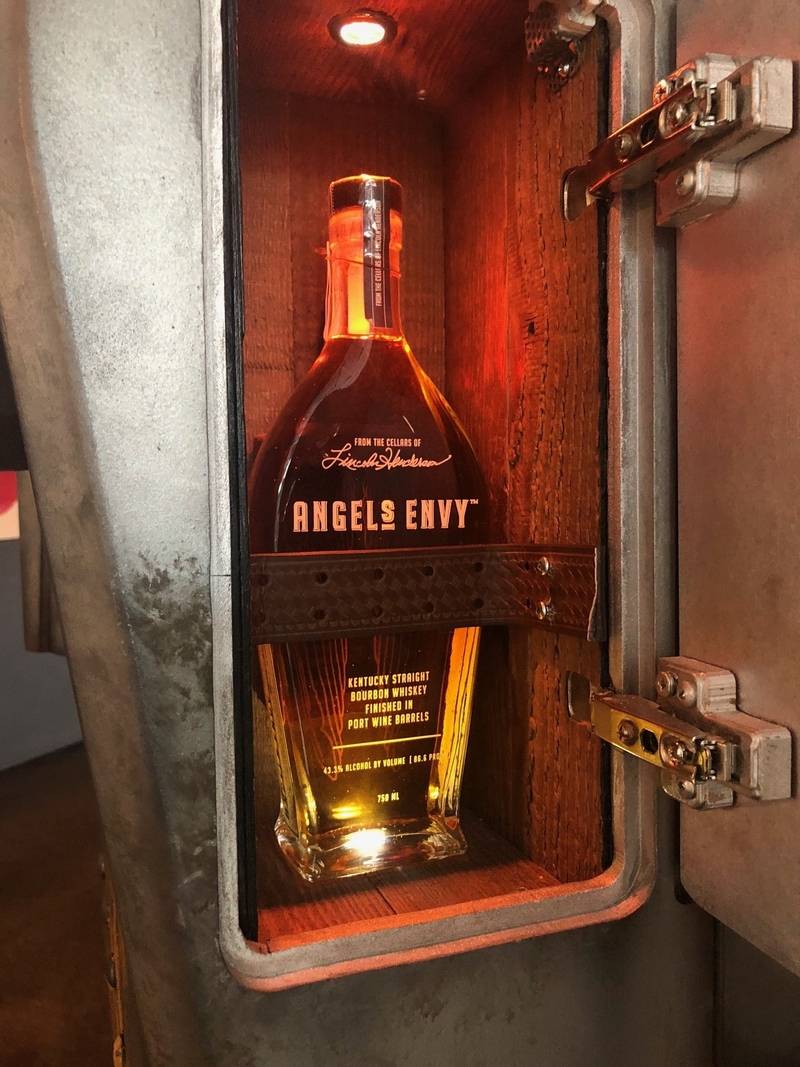
After the initial design was decided, it was time to add in some fun details that spoke to the culture at Surface 51, and music is an important part of that culture. “I personally love the S51-branded headphones, which represent the shared love of music within S51’s company culture,” says Rainey. “It just adds so much personality. Probably the most whiz-bang feature is the audio player embedded in the robot, allowing it to ‘speak.’ We asked Surface 51 to come up with some things for it to say, and they really went to town making some hilarious and authentic-sounding robot speech. There are speakers embedded in the robot’s elbow joints and a series of buttons and switches on its torso that trigger the audio to play. I love how the functional components are integrated in a way that’s also thematic — it really adds to the ‘realness’ of the robot.”
This is a fun project and all, but these are both businesses. So, an undertaking like this will obviously need to have some benefit to the bottom line. Fleener stresses the importance of building a culture for your business, something he thinks many don’t take the time to do. And not just for clients coming through the door, but for those that are there every day doing the work. We spend a good portion of our lives at work — why not make it an interesting place to be? As for the clients, as Fleener says “No one is going to forget that you have a giant robot.” For Taylor Studios, it introduces the community to the scope of work that they are capable of. Brennan says “We would love to collaborate with other companies to design/build their idea or icon. We want the world to know that we are 3-D storytellers, and we can bring their story to life — whether it’s an interpretive message, a corporate philosophy, or a brand identity — in an unforgettable way.”
The robot was officially revealed yesterday, and Fleener says they will be inviting folks to help name it soon. Here’s a look at the process from beginning to end:
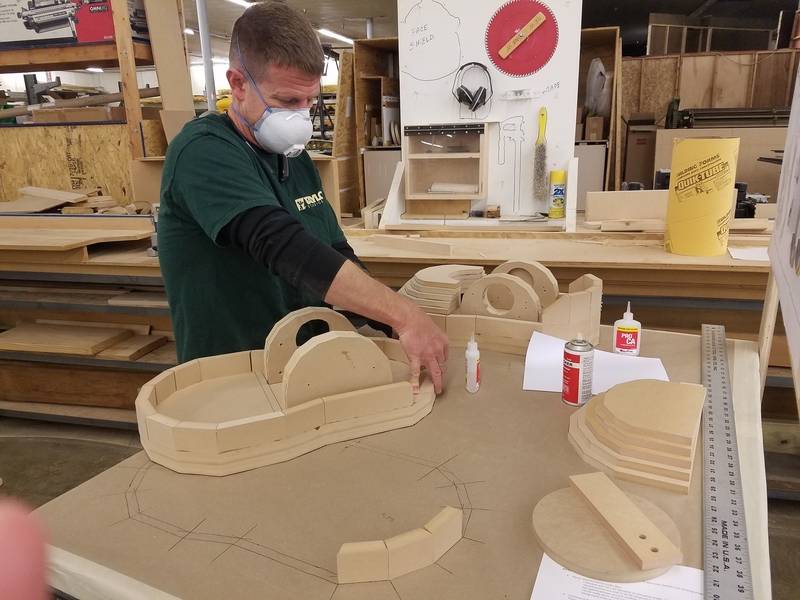
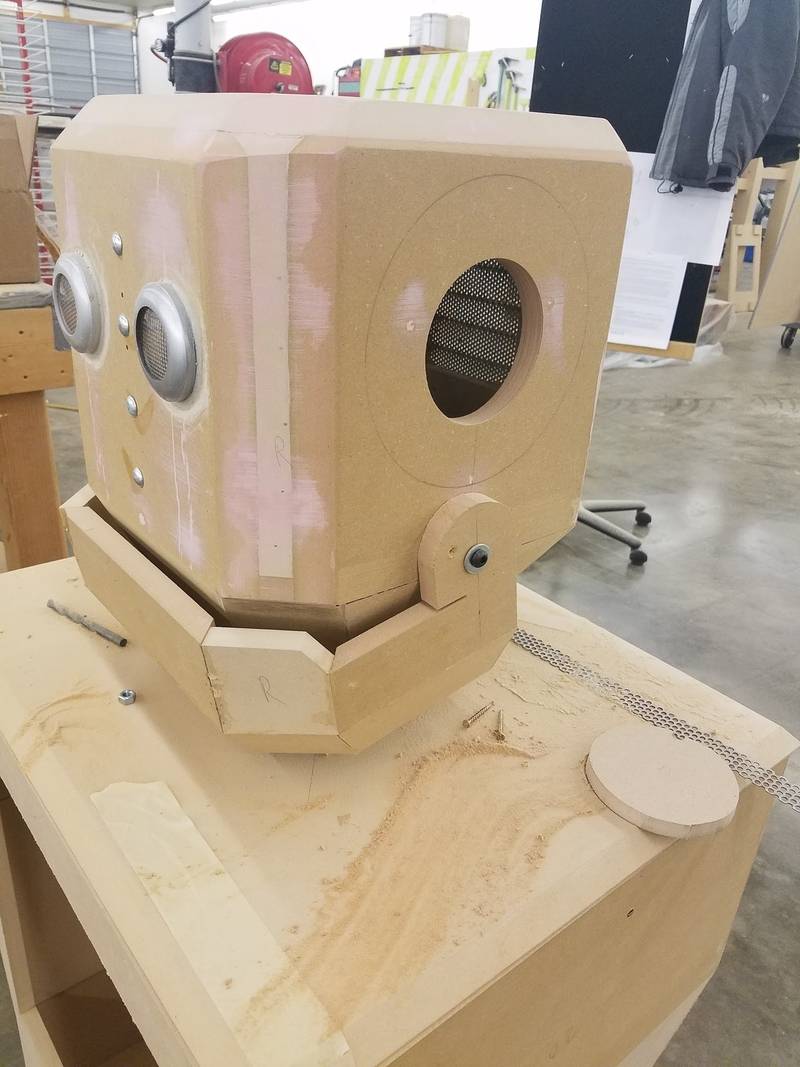 Models Department Lead Marc Dams builds the structure of the robot out of engineered wood
Models Department Lead Marc Dams builds the structure of the robot out of engineered wood
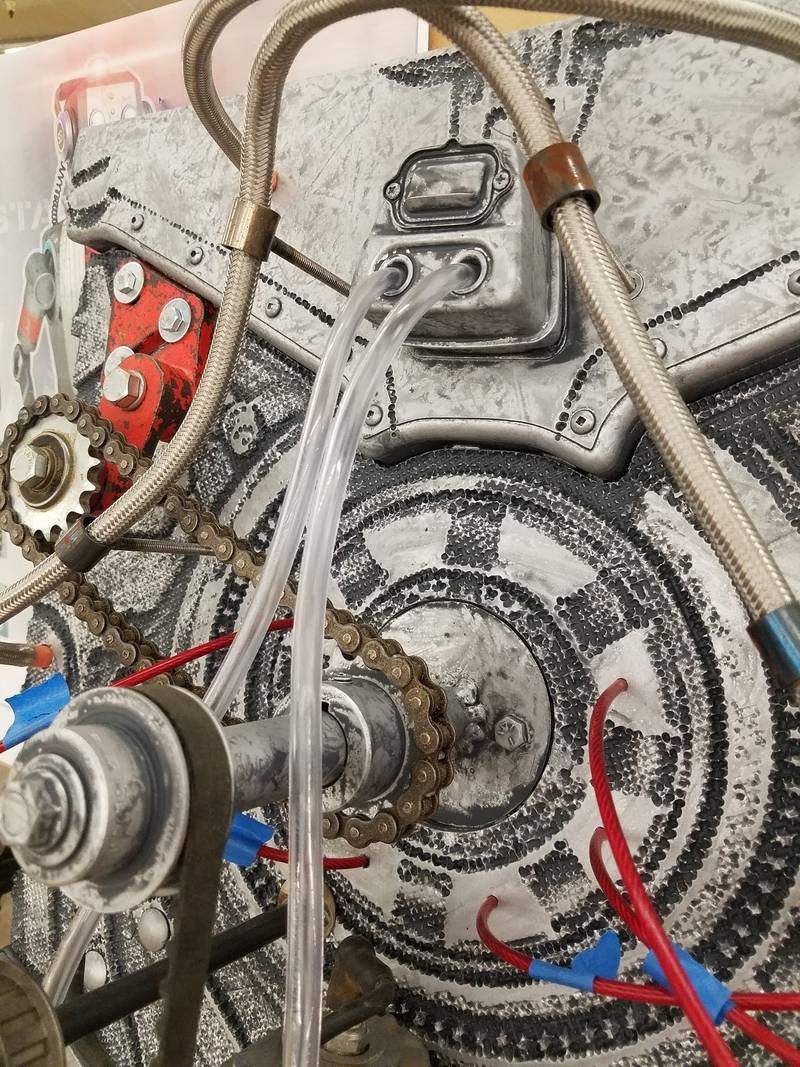 The robot’s “inner workings” visible through its grated chest comprise salvaged industrial parts mounted to a painted backdrop.
The robot’s “inner workings” visible through its grated chest comprise salvaged industrial parts mounted to a painted backdrop.
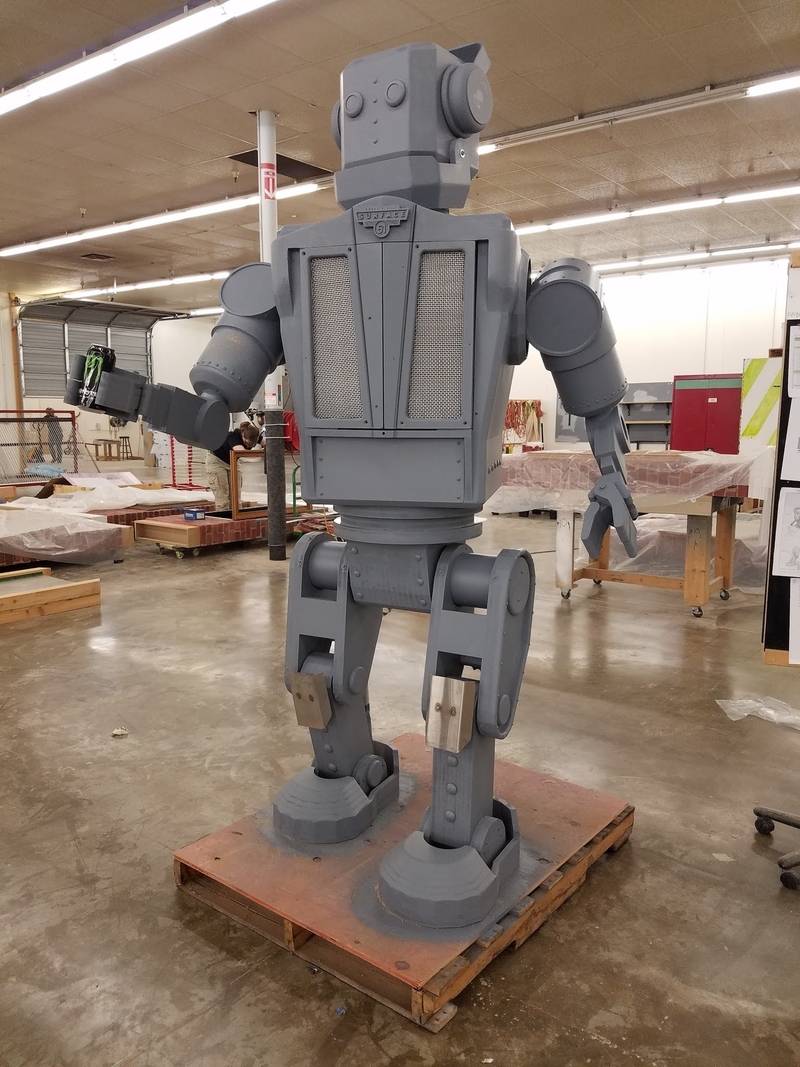 Fully assembled and standing 8 feet tall, the robot model is primed and ready for paint.
Fully assembled and standing 8 feet tall, the robot model is primed and ready for paint.
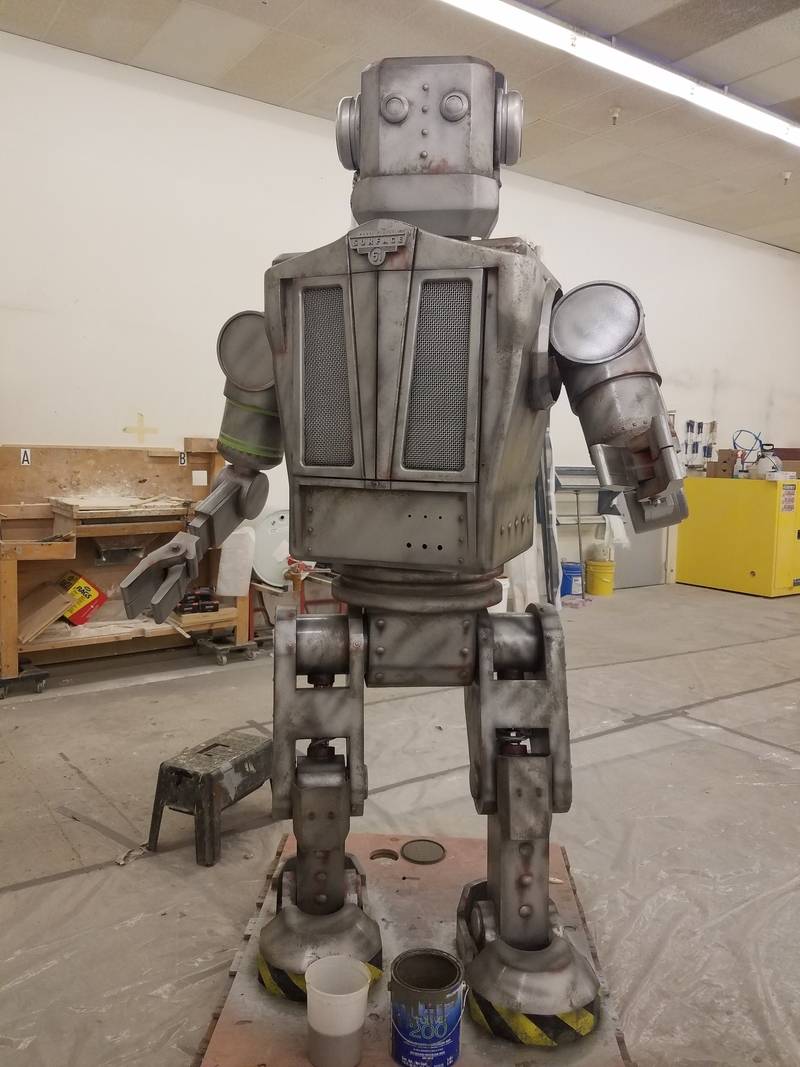 The base layer of paint theming achieves a realistic metallic finish with plenty of “grungy” character.
The base layer of paint theming achieves a realistic metallic finish with plenty of “grungy” character.
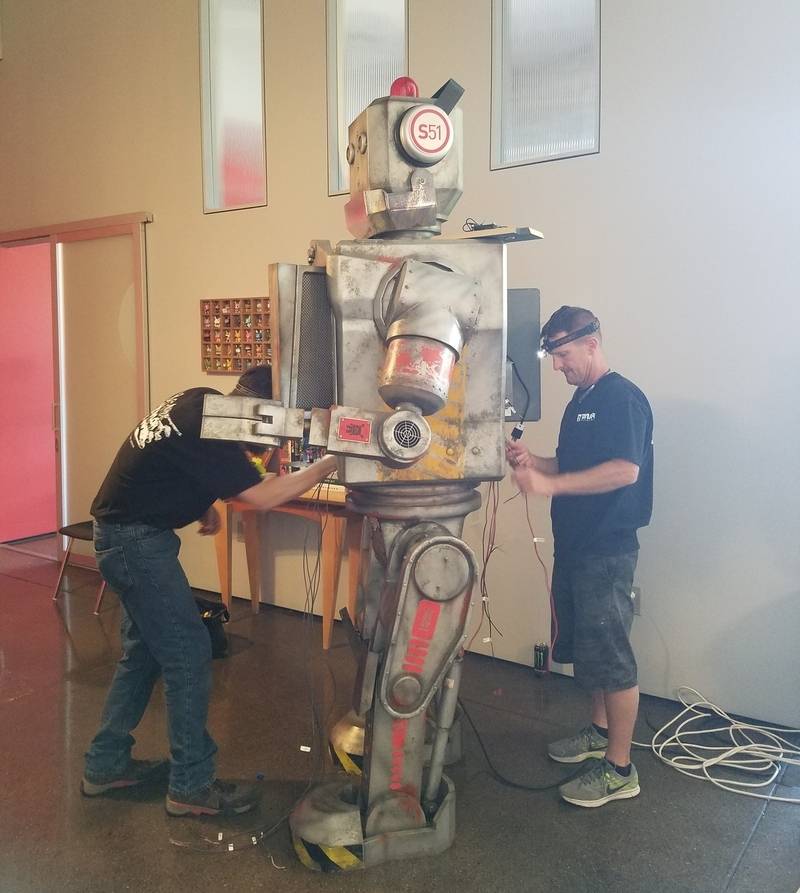 Senior Interactive Specialist Michael Hall and Models Department Lead Marc Dams install the robot in the Surface 51 offices.
Senior Interactive Specialist Michael Hall and Models Department Lead Marc Dams install the robot in the Surface 51 offices.
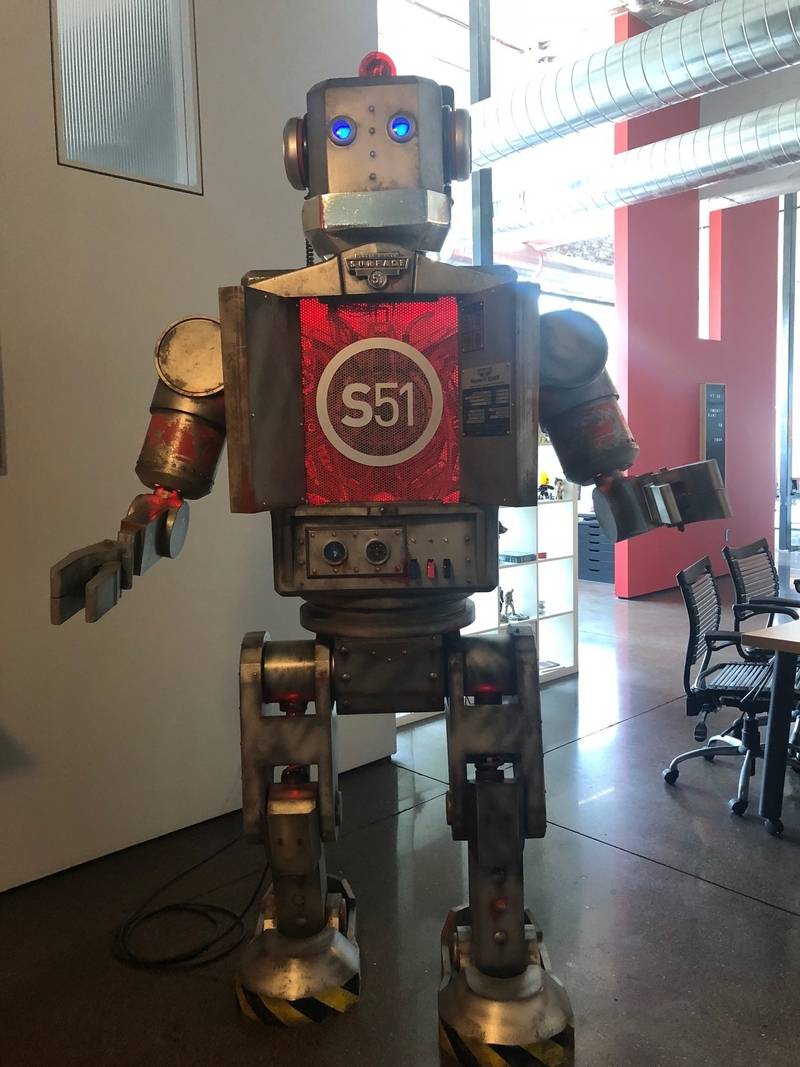
Process photos and design sketches provided by Taylor Studios. All other photos by Julie McClure.








